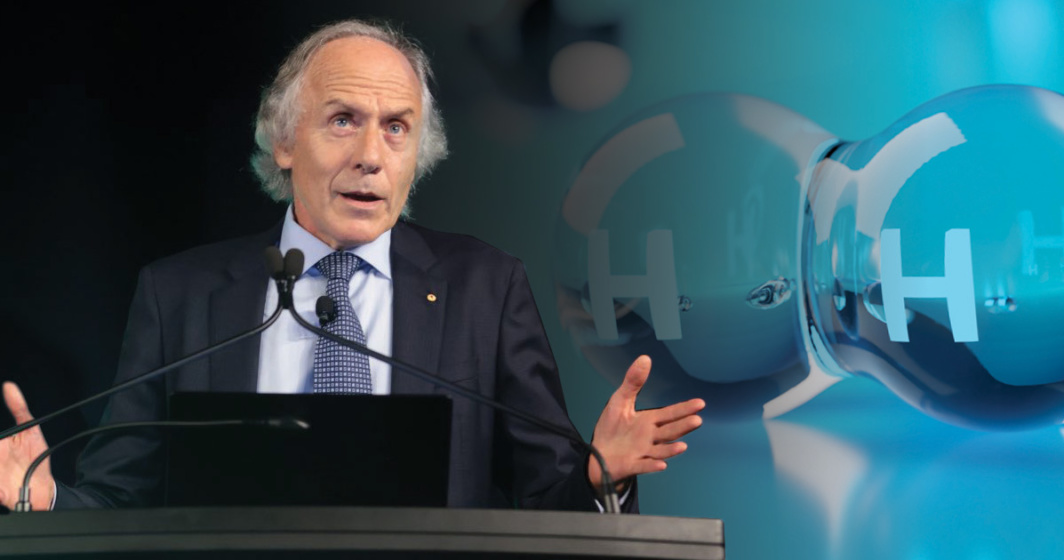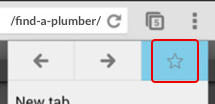From the science labs to the suburbs, hydrogen is officially here. Kathryn Kernohan interviews the experts to find out how it will impact our industry and our world.
The world’s most abundant, efficient and cleanest burning substance is gaining more and more prominence as Australia explores ways to meet its target of zero net emissions by 2050.
With hydrogen now being used in part to power households, cars and barbecues across the country, the sky is the limit as to how far the clean, green alternative fuel can take us.

And with a National Hydrogen Strategy guiding Australia’s short and long-term futures, it is clear that hydrogen will play a major role in Australia for generations to come.
So, what does the plumbing industry need to know and what role can it play as part of the transition towards a zero-emissions future?
Dr Alan Finkel, who served as Australia’s Chief Scientist between 2016 and 2020 and is now the Special Adviser to the Australian Government on low-emissions technology, says having plumbers and gasfitters upskilled to work with hydrogen will be critical.
“Producing hydrogen by splitting water is simple in principle, but complex in practice. Each large-scale electrolyser needs a lot of skilled work to connect it to balance off plant equipment such as air conditioning, water deionisation units, hydrogen gas compressors and pipelines,” he explains.
“Unlike solar panels, the pumps, valves, compressors and air conditioning systems will require regular maintenance. If building and industrial heating shifts from natural gas to hydrogen, there will be considerable work required to upgrade the appliances and in-building pipes.”
Hydrogen can be produced as a gas or liquid and can be delivered through existing gas pipelines. Green hydrogen, which is entirely emissions-free, is produced by a renewable energy-fueled electrolyser that sends an electric current through water to split hydrogen from oxygen.
Over time, and with modifications to existing gas networks and appliances, hydrogen has the potential to replace natural gas for everyday activities like domestic cooking as well as heating and hot water.
The National Hydrogen Strategy, released in 2019 and developed by a Taskforce led by Dr Finkel, sets out a vision for a clean, innovative, safe and competitive hydrogen industry. The strategy outlines the piloting, trialing and demonstration of hydrogen projects before large-scale market activation from 2025 onwards.
Most states and territories have also produced their own hydrogen plans citing the important role of the plumbing industry in supporting the transition towards clean energy. Victoria’s Renewable Hydrogen Industry Development Plan highlights the opportunity a hydrogen economy presents, particularly its capacity to bring new jobs and investment to our state. Victoria is currently home to 28,000 licensed plumbers, of which 20,000 are gas fitters, demonstrating the strong foundations to transition to working with hydrogen.
Brendan Gould, Master Plumbers’ Executive Manager Training Services, is confident that the industry is ready to start adapting to a new-look future and can play a vital role in supporting the wider public to understand the role and benefit of hydrogen.
“We don’t really know yet where things will end up, but we want our industry to start becoming aware of the fact that there will be opportunities to upskill and we will be presented with challenges moving forward. I like to think we have the capacity to transition into a space using a new fuel,” he says.
“However, in some ways we’re almost the last stakeholder to be involved outside of the consumer. We need the manufacturers to get on board because if we don’t have the appliances that are ready for hydrogen, it impedes us installing gas systems for hydrogen.
“We continue to work collaboratively with industry and Government to let them know that hydrogen is a bona fide opportunity to transition to cleaner fuel,” he says.
Brendan says a key role the plumbing industry will play is in educating the broader community that hydrogen is safe - in fact, safer than many commonly used fuels.
“We need to give our consumers the satisfaction that hydrogen won’t be dangerous - a big part of that is making sure that we do safety really well, to keep customer satisfaction and confidence at the highest level.”
Master Plumbers is laying the groundwork for future demand for hydrogen skill development and training, including through our partnership with the Plumbing Industry Climate Action Centre (PICAC) which is developing a $20m state-of-the-art Hydrogen Training Centre of Excellence in Queensland.
The existing state-of-the-art PICAC training facilities in Brunswick and Narre Warren in Victoria are also being equipped with world-class hydrogen training equipment, including separate zones where training can be structured towards hydrogen gas.
“We believe that if Australia is to truly embrace and take advantage of the possibilities and opportunities provided by hydrogen, more training facilities will be needed in the future,” Master Plumbers CEO Peter Daly says.
“The plumbing and gasfitting industries can be at the forefront of the push across Australian states and territories towards net-zero emissions, of which hydrogen energy sources can play an enormous role.
“We know that moving forward there will be extensive opportunities for gasfitters in the installation and maintenance of hydrogen alongside or in place of natural gas and LPG.”
A shift to hydrogen may require some infrastructure upgrades. For example, in Victoria, existing infrastructure is expected to accommodate blends of gas with 10% hydrogen but further upgrades and retrofitting pipes may be required if we move to high blends or pure hydrogen.
This is because, at some temperatures and pressures, high concentrations of hydrogen gas can degrade the quality of metal and older plastic pipes and potentially make them more brittle. Hydrogen is also a much smaller molecule, which makes some pipes and connections more prone to leakage. This can be addressed with ongoing retrofitting of parts of the existing network and through lining of pipes as we have done in the past in potable water and sewer networks.
Hydrogen is not all about sustainability. It could provide a lucrative export.
According to research conducted for the Federal Government, demand for hydrogen exported from Australia could be more than three-million tonnes each year by 2040, which could be worth up to $10 billion each year to the economy by that time. Dr Finkel sees a future where Australia is a potential hydrogen producing powerhouse, assisted by our sunshine, land and wind being conducive to producing renewable energy.
“We are a trusted international energy supplier, and we have substantial experience in large scale resource and project development,” he says.
“As a large-scale producer of renewable electricity and hydrogen, we could domestically supply all the energy we need for a zero-emissions transport sector. Thus, our national energy security would be massively improved because we would not rely on oil imports. The hydrogen we export will help other countries to reduce their emissions and will give them a trusted alternative to their traditional fossil fuel supplies.”
Australia’s first refueling operation and the manufacturing movement
Other developments across the country include Australia’s first modular hydrogen production and integrated fuel cell electric vehicles (FCEV) refueling operation in Truganina, Victoria. The site will eventually be able supply approximately 3,000 kilograms of hydrogen, with capacity to fuel more than 100 vehicles per day.
There is also movement in manufacturers exploring how hydrogen can power everyday appliances. Australian Gas Networks has devised a hydrogenpowered, zero-emissions BBQ which produces the same results as a regular barbecue.
“We’d like to think similar products could be manufactured to use hydrogen as a fuel source and effectively burn fuel cleanly to make sure that we get the same level of output from the appliance, just from a different energy source,” says Brendan Gould.
Toyota takes on the hydrogen challenge
Toyota recently launched the second generation of its hydrogen fuel cell electric vehicle Mirai. The car’s only by-product is water vapor. Hydrogen is stored in the Mirai’s safe, durable and purpose-built tanks before being released into the fuel cell system. In the fuel cell system, hydrogen and oxygen from the air combine in a chemical reaction that creates electricity to power the electric motor.
Much to learn but hydrogen is an important element to sustainable energy
While there is much to be learnt on the pathway to Australia meeting its 2050 obligation, Master Plumbers reiterated the enormous opportunity provided to its members in a 2021 discussion paper.
“There will be extensive opportunities for gasfitters to play a critical role in the installation and maintenance of hydrogen alongside or in place of traditional gas, such as natural and LPG,” it says.
“The overarching point to be made is that the requisite skill sets already exist within the plumbing and gas fitting workforce. Hydrogen skills should be thought of as an adjunct to those existing competency-based skill sets, rather than the creation of an entirely new skill set or trade.”
According to Dr Finkel, who says the level of interest in hydrogen is at the high end of his expectations, the country is ready for the transition ahead.
“The public wants to be assured that the adoption of hydrogen will be safe and cost effective, but other than that a lot of people are ready for the shift to clean electricity and hydrogen fuel.”
Mitchell Park, South Australia
Indicative of the levels of curiosity and support of the shift to hydrogen, all of the more than 700 households in the Adelaide suburb of Mitchell Park who were approached to participate in a pilot to power their homes with a renewable hydrogen blend agreed to take part.
The pilot is part of the $14.5m Hydrogen Park South Australia (HyP SA) project, in which renewable hydrogen is produced using a 1.25MW Siemens Proton Exchange Membrane electrolyser with water and renewable electricity.
The renewable hydrogen is blended with natural gas at volumes of up to 5% and supplied to homes via the existing gas network.
Dr Alan Finkel says, “It is professionally built, with the intention that it be a long-term capability rather than an experiment.”
The current blend of up to 5% renewable hydrogen in natural gas is Australia’s largest renewable gas project, residents do not pay any more than if they were receiving 100% natural gas, and households have noticed any changes to their gas supplies since the pilot was launched.
Leeds, UK
The English city of Leeds is known for a worldfamous rock festival, having the oldest running commercial railway in the world, and now, an industry-leading project to convert the gas network to 100% hydrogen.
The H21 Leeds City Gate report found that the UK gas networks are the correct capacity to be converted to 100% hydrogen and that appliances could be converted to operate on 100% hydrogen.
It found that the total cost to convert Leeds including hydrogen production and storage, all associated infrastructure and appliance conversions would be in the region of £2b.
Demolition and clearance of a major gas holder site in Leeds began in April 2022. It will be replaced by green hydrogen facilities which over time will service rail demand from Inverness station and a significant portion of the area’s heavy goods vehicles and bus fleets.
The project is in line with the UK Government’s pledge to reach net zero emissions by 2050.
Rinnai Australia
Rinnai Australia has unveiled two new renewable product technologies designed to support Australia’s clean energy-mix future.
In a world first, Rinnai Japan has developed a Continuous Flow hot water system for the domestic market, which uses 100% hydrogen-combustion technology and features zero-carbon emissions in a way that also addresses the issues of “explosion risk” and provides “combustion stability” sometimes associated with hydrogen fuel usage.
As initial steps are being taken across the Australia market with a view to potentially using 100% hydrogen as a residential energy source, Rinnai started demonstration testing in South Australia and Victoria to help drive the consideration of H2 as a part of the Australian energy-mix future.
In addition, Rinnai also showcased its new Geoflo Hybrid 22 geothermal and inverter hybrid system, fully designed, and manufactured in Australia.
The Geoflo Hybrid 22 geothermal system utilises the abundantly free-renewable underground energy to deliver superior energy-efficient heating and cooling all-year round while also diverting surplus energy to the generation of essentially free hot water to the home.
These two new key innovative product developments will feature as part of Rinnai’s rapidly growing renewable energy product portfolio, which already includes Solar Hot Water and high Coefficient of Performance (COP) Heat Pump system.
Are you a plumber or a business working in the green-hydrogen space and want to tell your story? Email your thoughts to [email protected]
Share this Article






